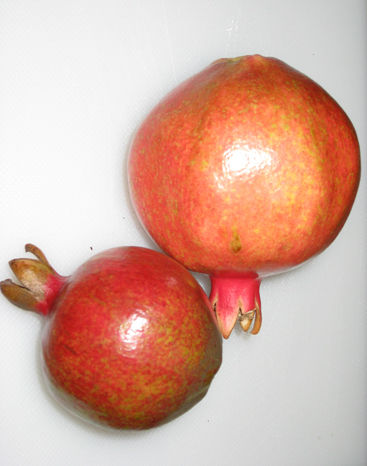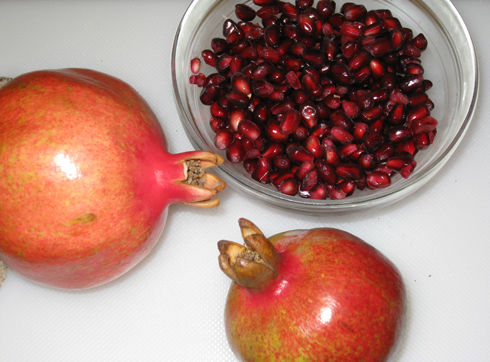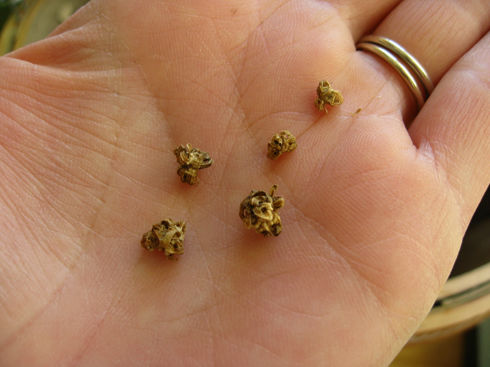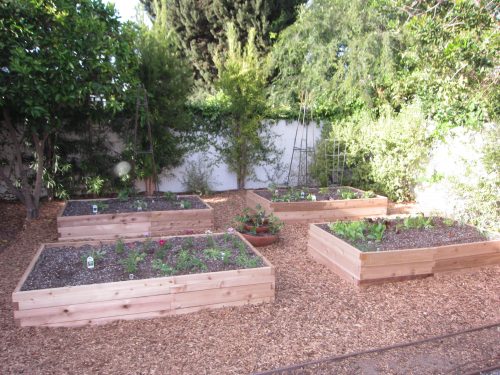Do you ever wonder how the first person ever figured out how to do certain things? Like who figured out that rhubarb stalks are tasty eating, but the leaves are poisonous? Or who figured out that soy beans have to be cooked in order to be digestible? If you’re wondering who figured out how to open a pomegranate without getting red stains all over themselves, I can tell you – it was my friend Lynn Jordan.
Okay so maybe other people came up with it at the same time, but after years of painstakingly picking single seeds (technically called arils) out of an open pomegranate, having sliced through half the seeds – rendering them useless – and ending up with red fingers and nails evoking images of horror films, Lynn showed me the way. All you need is a bowl of water.

nearly ripe pomegranates – these might taste bitter
But wait!
Let’s step back a moment. Knowing when to pick a pomegranate can be tricky business. You have to get them before the birds do in my neck of the woods, but the birds know when they’re ripe for picking. Here’s some handy info from Purdue University’s Horticultural Crop Index:
The fruit cannot be ripened off the tree, even with ethylene treatment. Growers generally consider the fruit ready for harvest if it makes a metallic sound when tapped. The fruit must be picked before over maturity when it tends to crack open if rained upon or under certain conditions of atmospheric humidity, dehydration by winds, or insufficient irrigation. Of course, one might assume that ultimate splitting is the natural means of seed release and dispersal. The fruits should not be pulled off but clipped close to the base so as to leave no stem to cause damage in handling.
Okay -now what?
Now that we’ve picked our ripe pomegranates, we find a nice big bowl of water. Follow these steps:
Score the pomegranate skin with a knife
Submerge the pomegranate into the bowl of water
Break the pomegranate apart along the score marks, removing the arils
Pour the pomegranate arils through a strainer to remove water
Then eat!

Tasty seeds (arils) make for great snacking, salad toppings and even dye for natural fabrics!
Here’s a step-by-step illustration provided by the folks at Pomegranates.org:
https://www.pomegranates.org/3-steps-no-mess/
How do you like to eat your pomegranates? And what is your trick for knowing when to pick them. Share it with us here.




It keeps the juices from splattering all over the place and staining everything you own.
What does submerging the pomegranate in water help achieve?